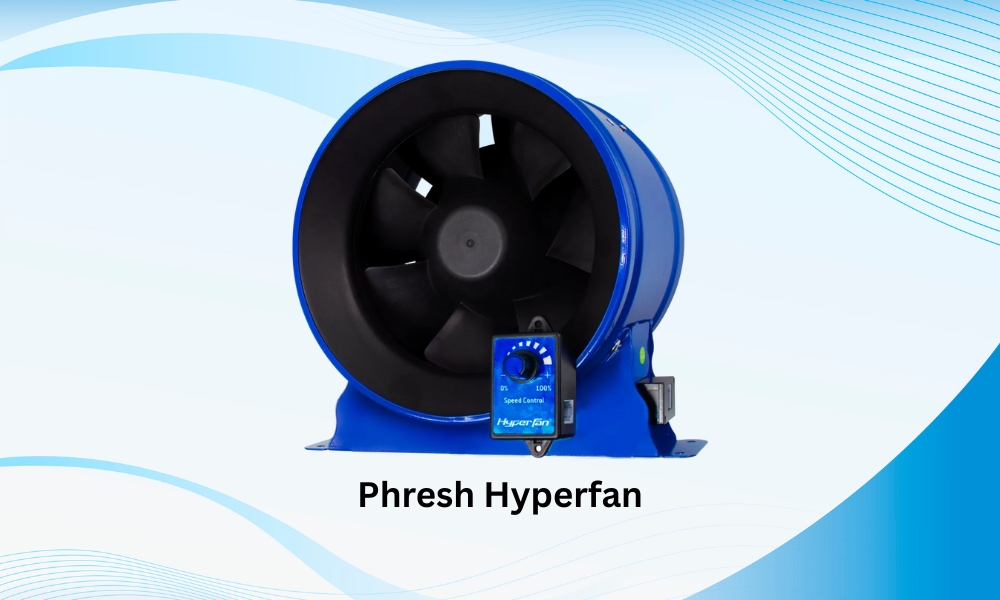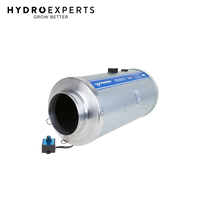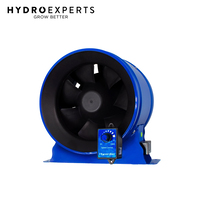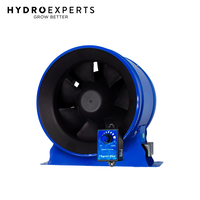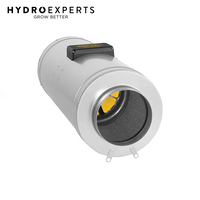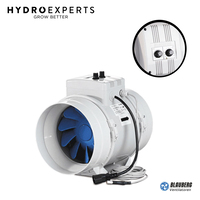Choose the Best Fan: AC, DC, or EC for Australian Homes
By Hydro Experts | 28 May 2025
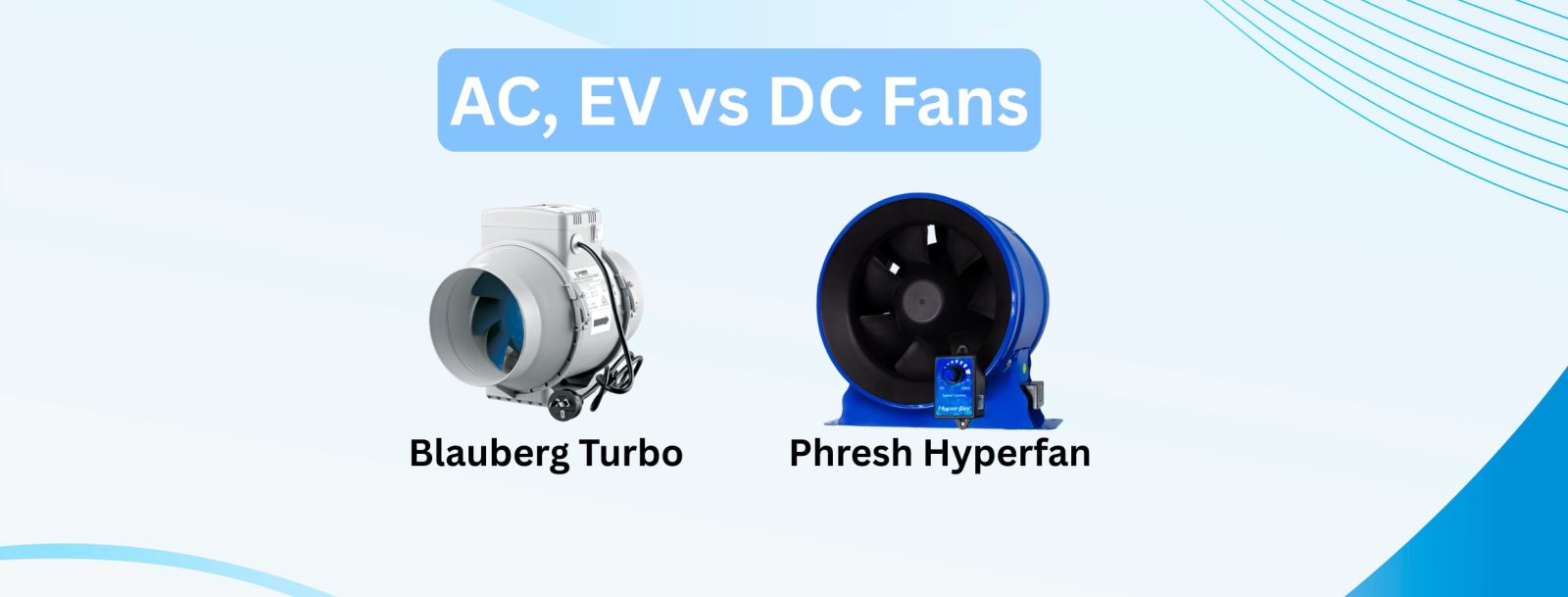
When you're standing in the fan aisle at Bunnings or browsing online for your next cooling and ventilation solution, the alphabet soup of AC, DC, and EC can feel pretty overwhelming. You're not alone if you've found yourself scratching your head, wondering what these letters actually mean and which type of fan is right for your home or business ventilation needs.
With Australia's scorching summers and rising electricity costs, choosing the right fan isn't just about staying cool, it's about creating effective ventilation systems without sending your power bill through the roof. Whether you're considering ceiling fans, exhaust fans, or comprehensive ventilation solutions, understanding these motor types will help you make an informed decision that'll keep you comfortable and your wallet happy.
What's All This AC, DC, and EC Business About
Before we dive into the nitty-gritty, let's get our bearings straight. These letters refer to the type of motor that drives your fan, and trust me, it makes a bigger difference than you might think for both comfort, cooling and ventilation efficiency.
AC (Alternating Current) fans are the traditional workhorses you'll find in most Australian homes. They've been around for decades and plug straight into your standard wall outlet, commonly used in ceiling fans and basic exhaust fan applications.
DC (Direct Current) fans are the newer kids on the block, running on a different type of electrical current that's converted from your home's AC supply. These motors are increasingly popular in modern ventilation systems and premium exhaust fan installations.
EC (Electronically Commutated) fans are essentially the premium version of DC fans, combining the best of both worlds with some clever electronic wizardry. They're often found in high-end ventilation systems and commercial exhaust fan applications.
AC Fans: The Reliable Old-Timers
AC fans have been cooling Australian homes and powering exhaust fan systems since your grandparents were young. They're straightforward, no-nonsense machines that get the job done in both comfort and ventilation applications.
How They Work
AC fans run directly off the alternating current from your power points. The motor inside uses electromagnetic fields to spin the blades, and while the technology is relatively simple, it's proven and reliable. This makes them suitable for basic ventilation needs and standard exhaust fan installations in bathrooms and kitchens.
The Good Stuff
The biggest advantage of AC fans is their upfront cost. You can pick up a decent ceiling fan from your local electrical wholesaler for under $200, making them the most budget-friendly option for basic ventilation needs. They're also incredibly reliable; many AC fans installed in the 1980s are still spinning away today, whether they're providing comfort cooling or operating as exhaust fans.
Replacement parts are everywhere, and any sparkie worth their salt can fix them. This widespread availability means you won't be left sweating while hunting for specialised components, whether you need repairs for your ceiling fan or exhaust fan system.
The Not-So-Good Stuff
Here's where AC fans show their age in modern ventilation applications. They're power-hungry beasts compared to their modern counterparts, which isn't great news when you're already dealing with hefty electricity bills during summer. This energy inefficiency affects both comfort cooling and ventilation costs.
They also tend to be noisier, especially at higher speeds, which can be a real pain when you're trying to sleep or when running exhaust fans in quiet areas of the home.
Speed control is another limitation. Most AC fans offer just three or four speed settings, and the transition between speeds can be quite noticeable, limiting their effectiveness in variable ventilation scenarios.
DC Fans: The Energy-Efficient Game Changers
DC fans have revolutionised both the ceiling fan market and ventilation systems in Australia over the past decade, and for good reason. They're increasingly popular in modern exhaust fan installations and comprehensive ventilation solutions.
How They Work
DC fans use an electronic driver to convert your home's AC power into DC power. This conversion allows for much more precise control over the motor, resulting in better performance across the board in both comfort cooling and ventilation applications.
The Good Stuff
Energy efficiency is where DC fans really shine in any ventilation system. They typically use 70% less power than comparable AC fans, which can translate to significant savings on your electricity bill. In a country where air conditioning costs can be astronomical, every bit of efficiency helps, whether you're running ceiling fans or exhaust fan systems.
The speed control on DC fans is simply brilliant for variable ventilation needs. Instead of three or four clunky speeds, you get smooth variable control, often with six or more settings. Some models even offer reverse speeds for winter circulation, making them excellent for year-round ventilation management.
DC fans are also much quieter, making them ideal for exhaust fan applications in bedrooms and bathrooms where noise is a concern. The electronic motor control eliminates much of the electrical noise that plagues AC fans, making them perfect for bedrooms and quiet spaces requiring effective ventilation.
The Not-So-Good Stuff
The main hurdle with DC fans is the initial investment. Quality DC fans typically start around $400-500, with premium models reaching $1000 or more. While the energy savings eventually offset this cost, the upfront expense can be a shock, particularly when upgrading multiple exhaust fans or ventilation systems.
The electronic components also mean there's more that can potentially go wrong, though reliability has improved dramatically in recent years. If something does break, repairs might require specialised knowledge or parts that aren't available at your local hardware store.
EC Fans: The Premium All-Rounders
EC fans represent the cutting edge of fan technology, combining the efficiency of DC motors with additional electronic enhancements. They're increasingly used in commercial ventilation systems and high-end residential exhaust fan installations.
How They Work
EC motors use electronic commutation instead of mechanical brushes, allowing for even more precise control and efficiency than standard DC fans. Think of them as DC fans with a master's degree in engineering, perfect for sophisticated ventilation management systems.
The Good Stuff
EC fans offer the ultimate in energy efficiency for any ventilation application, often surpassing even DC fans in power savings. They're incredibly quiet, with some models producing less noise than a whisper, ideal for exhaust fan applications in bedrooms and quiet areas. The motor control is so precise that you can fine-tune the airflow to exactly what you need for optimal ventilation.
Many EC fans come with smart features like integrated lighting, remote control, and even smartphone apps. Some models can automatically adjust their speed based on room temperature or time of day, making them excellent for automated ventilation systems and smart exhaust fan applications.
The build quality is typically excellent, with manufacturers often offering extended warranties that reflect their confidence in the product, important for critical ventilation applications.
The Not-So-Good Stuff
Price is a big barrier here. Quality EC fans often start above $600, with top-tier models costing well over $1000. You're paying for cutting-edge technology, but it's a significant investment for comprehensive ventilation systems or premium exhaust fan installations.
Like DC fans, the sophisticated electronics mean repairs can be complex and potentially expensive. The smart features, while convenient for advanced ventilation control, add another layer of potential complications.
Making Sense of the Numbers: Performance Comparison
Let's talk real-world performance with some numbers that matter to Australian households considering various ventilation solutions.
A typical 52-inch AC fan might draw 75 watts on high speed, while a comparable DC fan uses just 25 watts, and an EC fan might use as little as 20 watts. Over a summer where you're running the fan 8 hours a day for three months, that's the difference between about $54 (AC) and $15 (DC/EC) on your power bill, assuming 30 cents per kWh. These savings multiply when considering whole-house ventilation systems or multiple exhaust fan installations.
Airflow-wise, modern DC and EC fans often move more air than AC fans while using less power, thanks to improved blade design and motor efficiency. A quality DC fan might move 8,000 cubic metres of air per hour while drawing 25 watts, compared to an AC fan moving 6,000 cubic metres while drawing 75 watts, crucial considerations for effective ventilation performance.
What Works Best for Australian Conditions?
Australia's climate and electrical costs create some unique considerations when choosing fans for comfort cooling and ventilation systems.
For most Australian homes, DC fans hit the sweet spot between performance, efficiency, and cost for both ceiling fan applications and exhaust fan installations. The energy savings are substantial enough to justify the higher upfront cost, especially given our lengthy hot seasons and high electricity prices.
AC fans still make sense for rental properties, holiday homes, or situations where you need maximum value upfront. They're also worth considering for basic exhaust fan applications in spaces where noise isn't a major concern and the ventilation system won't see heavy use.
EC fans are worth the investment if you're building a new home, renovating extensively, or simply want the best available technology for your ventilation needs. They're particularly appealing for bedroom exhaust fans and sophisticated whole-house ventilation systems where quiet operation and precise control are crucial.
Installation and Maintenance Realities
From an installation perspective, all three fan types mount the same way to your ceiling, but there are some differences worth noting for various ventilation applications.
AC fans are straightforward for any qualified electrician to install, whether for comfort cooling or basic exhaust fan purposes. DC and EC fans require more attention to the electrical connections, particularly ensuring the driver unit (the electronic box that converts AC to DC) is properly ventilated and accessible, important consideration for exhaust fan installations in confined spaces.
Maintenance is generally similar across all types, regular cleaning and occasional lubrication. However, DC and EC fans' electronic components mean you'll want to avoid getting moisture near the driver units, particularly relevant for bathroom exhaust fan applications.
Which Fan Should You Choose?
For most Australian households considering both comfort and ventilation needs, DC fans offer the best balance of efficiency, performance, and value. The energy savings alone typically pay for the higher purchase price within 2-3 years, and you'll enjoy better comfort and quieter operation in the meantime, whether using them for ceiling fan applications or exhaust fan installations.
If budget is your primary concern, AC fans remain a solid choice, particularly for spaces that don't require constant use or basic ventilation needs. Just factor in the higher running costs when making your decision about your overall ventilation strategy.
EC fans are the premium choice for those who want the absolute best performance and don't mind paying for it. They're particularly worthwhile in primary living areas, sophisticated ventilation systems, and premium exhaust fan applications in bedrooms where you'll appreciate the superior quiet operation and precise control.
Remember, a quality fan from any category will serve you better than a cheap alternative, whether you're installing ceiling fans for comfort or exhaust fans for ventilation. Look for reputable brands, solid warranties, and local support when making your choice. Your future self, sweating through another Australian summer or dealing with poor ventilation, will thank you for choosing wisely.
FAQs
AC fans are budget-friendly but energy-hungry, DC fans offer 70% better efficiency with quieter operation, and EC fans provide premium performance with smart controls at the highest cost.
DC fans typically save around $39 per fan annually compared to AC fans, with payback periods of two to three years.
Yes, DC and EC fans excel in bathrooms due to quiet operation and variable speeds, though electronic components must be protected from moisture.
EC fans provide optimal whole-house ventilation with smart automation features, while DC fans offer excellent efficiency at more reasonable costs for multiple installations.
DC and EC fans need similar basic maintenance but require additional care for electronic components and may need specialist repairs, unlike readily serviceable AC fans.





